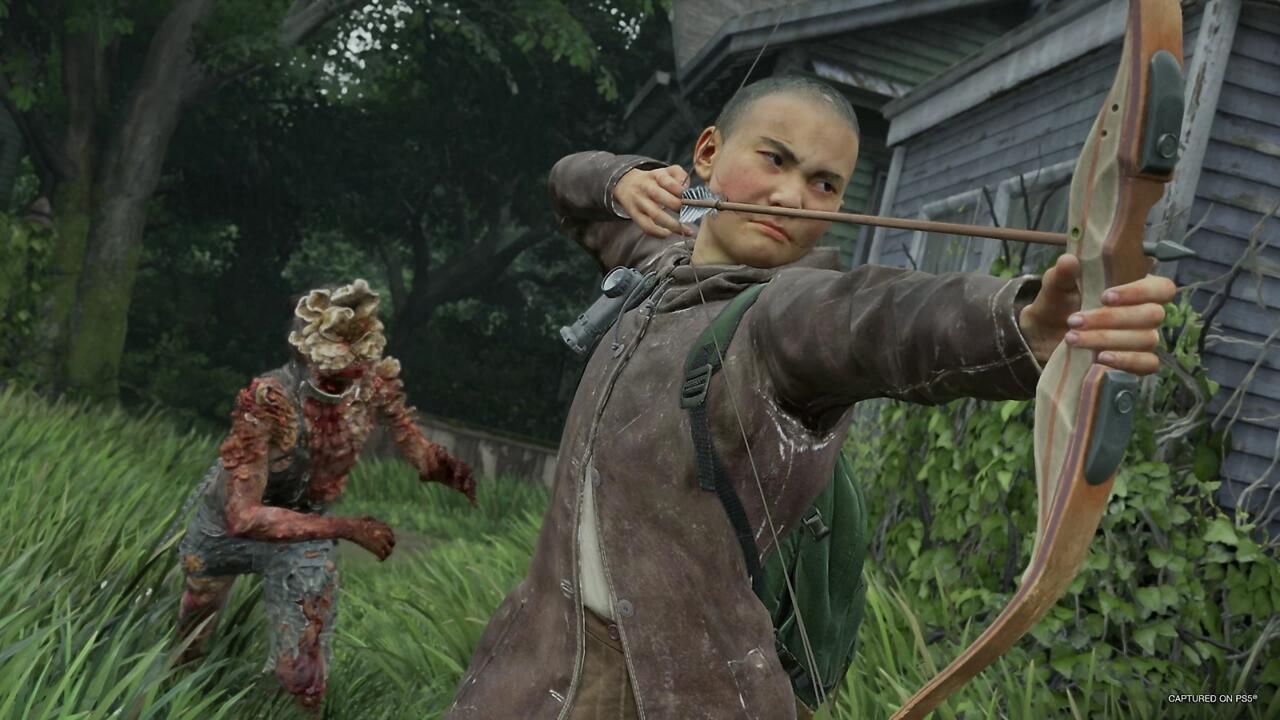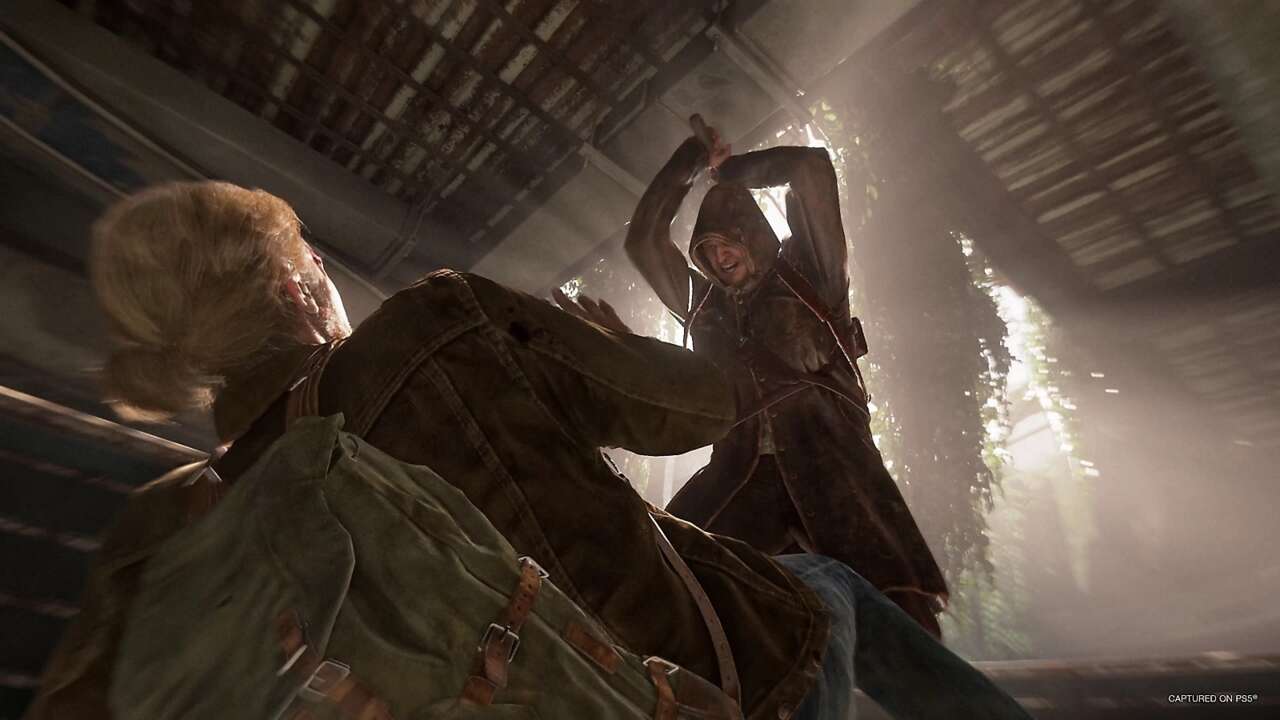Combat in The Last of Us Part 2 creates a pretty specific feeling. It’s often slow and heavy, providing a weight to every interaction that demonstrates just how tough it is to kill someone and how quickly things can go wrong. At the same time, it relies heavily on improvisation as you vault over objects, smash people with bricks, and bury machetes in guts–or just silently open someone’s jugular with your knife as you clamp a hand over their mouth.
Despite having a certain clunkiness, there’s an intensity to combat in The Last of Us Part 2 that many games never really achieve. And with the release of The Last of Us Part 2 Remastered, developer Naughty Dog pares back on story elements to focus on that combat in No Return, a roguelike mode that puts you into a series of random combat encounters.
No Return can generally be pretty fun. It flings you into encounters of a few different types against the different human factions of the game and its fungally infected monsters. Sometimes you’ll be hiding and sneaking around as enemies search for you, while other encounters focus on the scramble by shipping in enemies ready for a fight. Each “run” of No Return has you moving through six different encounters with a few opportunities to pick one set or another, with the series culminating in a boss fight. You’ll choose upgrades from random unlocked skill trees along the way, but if you die, the run restarts, and you lose everything you’ve earned.
By and large, it’s fine. No Return is a fun opportunity to use a set of mechanics that were obviously meticulously devised and honed, and it recaptures in bursts some of the high-stress moments that make The Last of Us Part 2 work on a visceral level.
At the same time, however, No Return feels kind of meaningless in a way that highlights the overall struggle of The Last of Us Part 2, and maybe games as a whole as they try to do interesting things with interactivity and storytelling. Murdering people in The Last of Us Part 2 is fun, despite a bunch of story elements specifically included to make it not fun–it’s a game about how cycles of violence perpetuate themselves and how inflicting violence can eat you alive. No Return highlights the shortcomings of trying to make a violent game that’s trying to make the point that violence is bad.
As Giancarlo Colantonio wrote at Digital Trends, the existence of No Return does a lot of work undermining the point of The Last of Us Part 2. Elements of combat and gameplay in the original game were designed to make violence seem extreme and unsettling. Killing someone among a group of enemies often leads to reactions from the survivors, calling out the name of someone they cared about in anguish. Stealthily stabbing someone in the neck leads them to slowly bleed out in your arms, their eyes wide to demonstrate their terror. Naughty Dog’s story specifically spends hours letting you kill members of a specific group as Ellie on her revenge quest, before switching perspectives to Abby, a member of that group, in order to humanize all your victims. This is all supposed to stick with you, and by making it all just random fun in No Return, Naughty Dog more or less kills the message.

But the issue is less that adding the No Return mode was a bad decision and more the fact that making a triple-A action video game is a fraught endeavor, and one that might not be able to handle conveying the sort of ideas that The Last of Us Part 2 trades in. This was also the case in the original release, in fact, as well as in the first game. This is a series that wants to raise big questions about the stain violence leaves on the soul, about the indirect harm it’s possible to do to people, about the cycles of pain and ruination that people can bring on others and themselves. But you still murder, like, hundreds of people by the end. The primary interactive thrust, the thing that you do in these games, is kill people.
These games are entertaining, the conflict and triumph are exciting, and the mechanics are specifically designed to maximize those emotions. In other words, Naughty Dog might want you to think “violence is bad,” but they still did all they could to make violence fun as hell. No Return just distills that dissonance without the moralizing that The Last of Us Part 2 often does poorly throughout its campaign.
At the same time, No Return is fun, but it’s not that fun, because the brainier elements of The Last of Us Part 2 are always getting in its way. Without the reason for the realism, the realism becomes an anchor holding back what makes the combat entertaining. The slow executions are annoyingly slow. The clunky fights feel like purposeful handicaps at odds with your ability to skillfully master the mechanics. Dropping into encounters where the enemies are already on alert becomes less exciting than frustrating as you get cut apart by enemies charging you with little regard for their own lives. It all becomes video gamey, but not in a way that’s satisfying.
It reminds me of the moment that really turned me against Spec Ops: The Line, a game that famously makes a point about video game violence. At some point, you have the opportunity to use white phosphorus–a war crime–against a group of enemies. It’s obvious that this is bad from the get-go, and yet you’re left with no other options; you can’t progress without using the white phosphorus. Five seconds later, sure enough, you walk through the battlefield and see that you murdered not soldiers but civilians, although either case would be equally horrific. The game then chastises you for your decision, as if you could have made any other one but turning the game off.

That moment always bothered me for a few reasons. First, Spec Ops: The Line wanted me to feel bad for making a decision it forced on me; second, developer Yager Development seemed to have no qualms about taking my money to make this violent interactive experience; and third, the game had a multiplayer mode. Making a comment on video game violence was completely undermined by also selling the fun of shooting both computer-controlled soldiers and other players.
And with No Return, that feels like the case of The Last of Us Part 2, as well. It doesn’t seem possible for Naughty Dog to make a game that accomplishes these gameplay goals and these story goals. It’s not just that there’s the dreaded ludonarrative dissonance at play here–it’s that the game is struggling to combine concepts of fun and meaning in a thoughtful way, and can’t really manage it.
I liked No Return because I liked the combat mechanics of The Last of Us Part 2, but it doesn’t really have all that much to offer. After a few hours of different combinations of elements and random character traits, it feels like I’ve gotten everything I can out of it, and it never really becomes compelling enough to make me want to keep playing it like I might other action games or roguelikes. These are game mechanics that try to serve too many goals at once, and in the end, can’t serve any very well.

